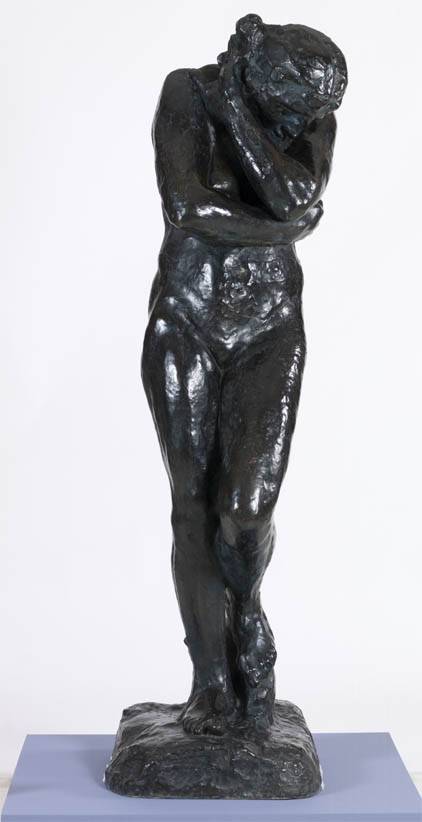Rodin, Auguste (1840-1917)
Eve, après la faute (Eve, After the Fall)
1881 (cast executed 1913)
Bronze, 172.72 x 53.34 x 63.5 cm
Buffalo AKG Art Museum, Buffalo
Auguste Rodin was deeply inspired by tradition, yet rebelled against idealized forms. He introduced innovative techniques to sculptural practice that connect his work with similar stylistic shifts in painting of the time. A key turning point in Rodin’s career came in 1880, when he was commissioned to create a pair of bronze doors for a proposed museum of decorative arts in Paris. Entitled Porte de l’Enfer (The Gates of Hell), the doors are covered in figures from The Inferno, the first section of Dante Alighieri‘s (Italian, 1265–1321) Divine Comedy. The project occupied him for over twenty years, but neither the museum nor Rodin’s gates were ever fully realized. According to a series of preparatory drawings, Rodin intended for figures of Adam and Eve to be placed on either side of the gates; this sculpture is related to those figures. Eve’s gesture of recoil in this sculpture conveys a sense of guilt and shame reminiscent of Michelangelo‘s (Italian, 1475–1564) depiction of her in The Fall of Man and Expulsion from Eden from the Sistine Chapel, a work Rodin greatly admired. During the time that Rodin worked on The Gates of Hell, his style matured. He began countering academic conventions of restraint by imbuing his works with physicality and vitality. Like Eve, many of Rodin’s most renowned sculptures, such as Le Penseur (The Thinker), originated as figures for the project and only later were presented as independent works. (AKG)
